Chinese steamed buns are the stuff dreams are made of. They are light and fluffy and filled with the most delicious fillings, from Char Siu or Chinese Roast Pork to vegetables sautéed in hoisin sauce.
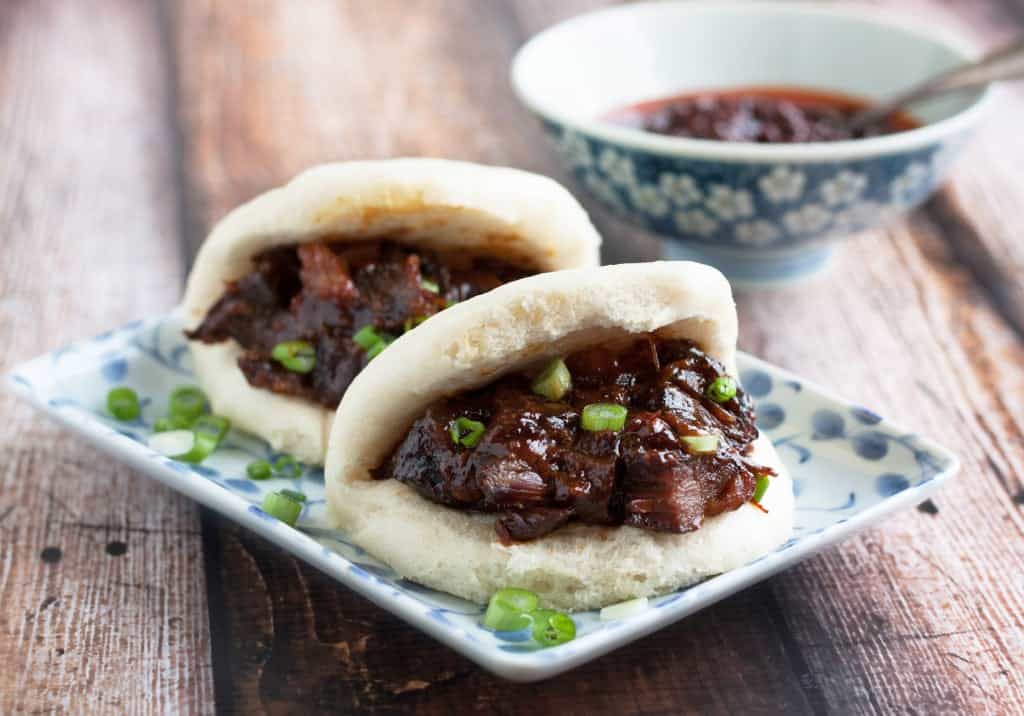
This post may contain affiliate links. As an Amazon Associate, I earn from qualifying purchases. See my Affiliate Disclosure.
In China, steamed buns like Char Siu Bao are usually offered as dim sum and served with tea for breakfast or brunch. I like to serve them at all times of the day.
What are steam buns called in Chinese?
Buns with filling added before cooking are called baozi or bao, like Char Siu Bao. Unfilled buns are mantou. This recipe is for mantou, but the dough recipe is the same for bao.
To make bao with this recipe, you’ll simply add the filling is added to the uncooked dough, wrap the dough around the filling and seal it, and then cook the buns in the same way you would the unfilled buns.

This simple recipe uses only a handful of ingredients—all-purpose flour, yeast, baking powder, vegetable oil, salt, and water. But you can make variations including using whole-wheat flour instead of all-purpose, lard or vegetable shortening instead of vegetable oil, or milk instead of water.
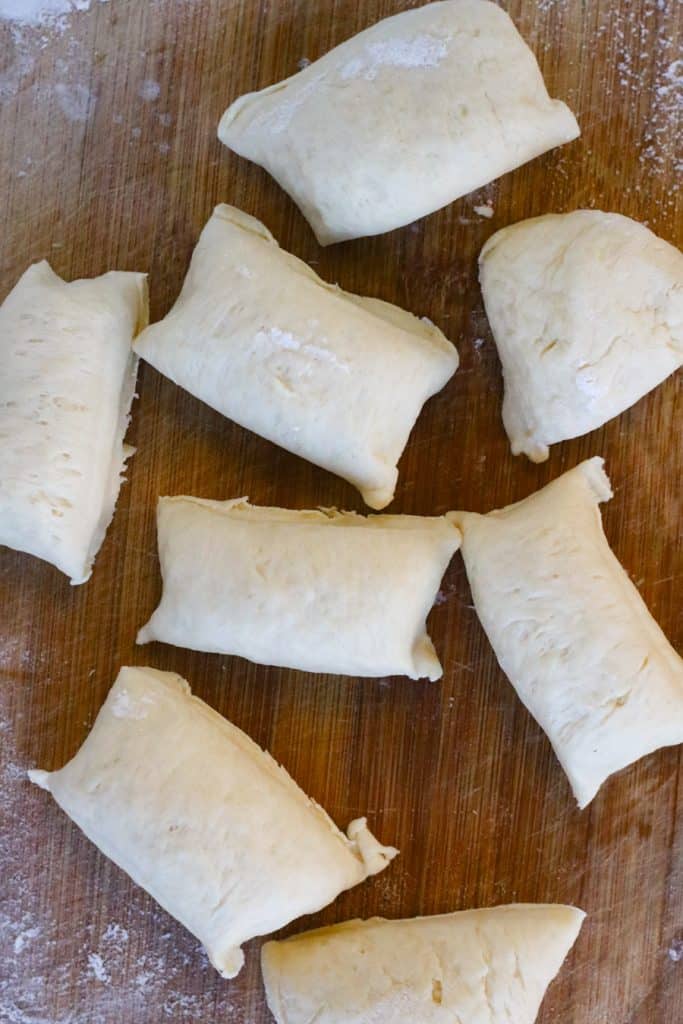
Each variation provides a different flavor and texture experience. It’s fun to experiment!
I use a stand mixer to make the dough for my Chinese steamed buns, but you can use a hand-held electric mixer or even mix by hand. I find the stand mixer to be the easiest method and it cuts down significantly on the amount of hand-kneading time required.
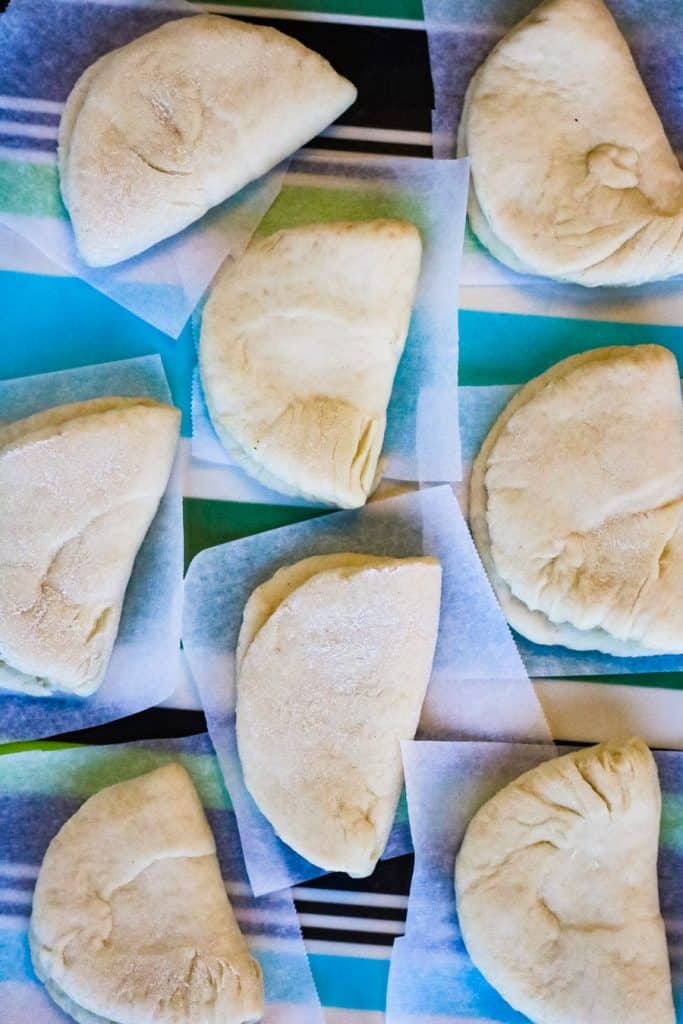
How to make Chinese steamed buns step-by-step
- Combine the yeast with warm water and a pinch of sugar. Let this mixture stand for about 10 minutes until it is foamy.
- Combine flour, baking powder, and sugar in a large mixing bowl or the bowl of a stand mixer.
- Stir oil into the yeast mixture.
- With the mixer running, add the yeast mixture to the flour mixer and mix until it comes together in a sticky dough. If using a stand mixer, continue to mix/knead the dough in the mixer for about 3 minutes.
- Transfer the dough to a floured work surface and knead it until it is nice and smooth, 3 to 5 minutes (this will take less time if you kneaded in a stand mixer, more if you didn’t).
- Place the dough ball in a large, lightly oiled bowl, cover with plastic wrap or a clean dishtowel, and set in a warm spot (like the kitchen countertop) and let rise until doubled in size, 1 to 2 hours (the length of time will depend on how warm or cool your kitchen is. Dough will rise faster in a warmer environment.) If it is chilly in your kitchen, you can put the dough in the oven with just the light on. This will create a warmer, draft-free environment for the dough to rise.
- Once the dough has doubled in size, split it in half. Roll each half into a log about 8 inches long and 2 inches in diameter. Cut each log into 8 equal-sized pieces. Roll each piece into a ball.
- Using a rolling pin on a lightly floured work surface, roll each dough ball into a flat round about 4 inches in diameter. If you plan to steam the buns without filling, fold each circle over to make a half-circle and place each on a square of parchment paper. If you plan to fill the buns before steaming them, place a heaping spoonful of filling on top of each dough circle, bring up the sides around the filling and pinch the dough closed, and twist to seal it. Place the filled buns, twisted side down, on squares of parchment paper.
- Cover the buns and let them rise for about 30 minutes.
- Place the buns, on their parchment squares, in a bamboo steamer basket set over simmering water. Steam for 10 to 12 minutes, until the buns puff up.
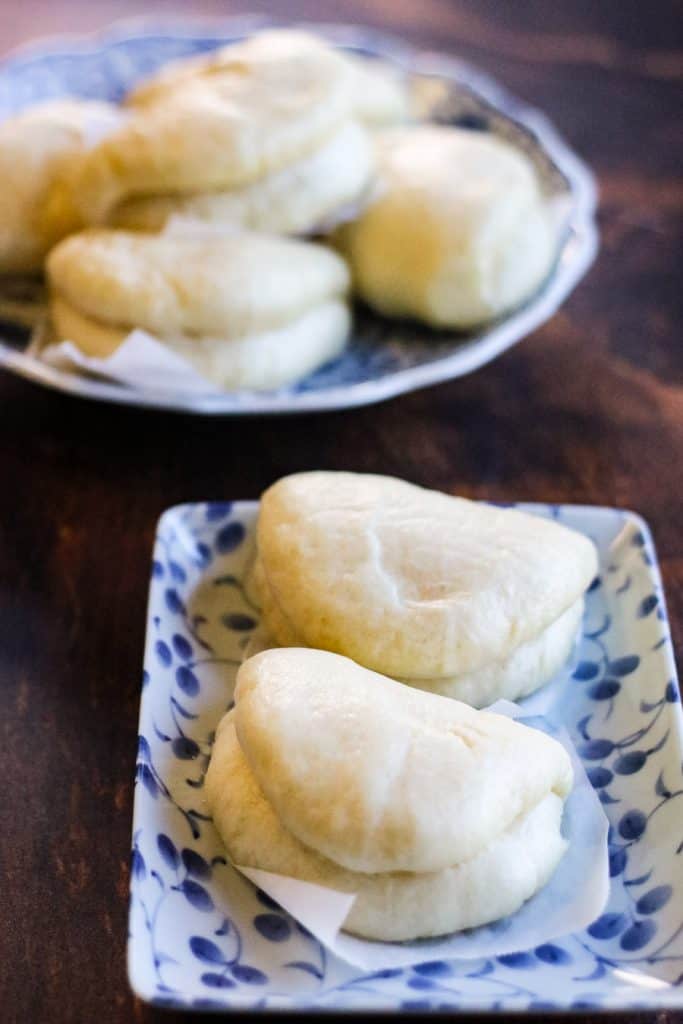
Tips for making perfect steamed buns
- You can use either active dry yeast or instant yeast. I have used both and honestly, I can’t tell the difference here.
- Add the yeast to warm, not boiling water. The water should be warm to the touch—around 110ºF. If it is much cooler than that, it will not activate the yeast, so the dough will not rise properly. If it is much hotter than that, it may kill the yeast and prevent the dough from rising.
- The dough should be pretty wet and sticky. It will feel tacky to the touch, not dry.
- During kneading, be careful not to add too much flour. You want to use enough to keep the dough from sticking badly to the work surface or your hands, but you still want the dough to remain tacky.
- Don’t leave out the sugar. The resulting buns do not taste overly sweet, but the sugar helps to form gluten, which is what gives your buns that nice lofty rise.
- Be sure to let your dough rise twice—once just after mixing and kneading and again after you’ve formed or filled your buns.
- Do not allow the dough to over-ferment. You want the dough to double in size during the first rise. This should take 1 to 2 hours. Once it has doubled in size, move on to the next step. If you aren’t able to complete the next step right away, wrap the dough in plastic wrap and refrigerate it until you have time to finish the recipe. Refrigeration halts the fermentation process. Let the dough come to room temperature before continuing.
- Enjoy the buns immediately or save them for later. To save extra buns, let them cool to room temperature and then wrap them in plastic wrap. They’ll keep in the refrigerator for up to 3 days or in the freezer for up to 3 months.
- To serve refrigerated or frozen buns, thaw if frozen and let the buns come to room temperature. Reheat the buns by steaming them for 5 to 10 minutes.
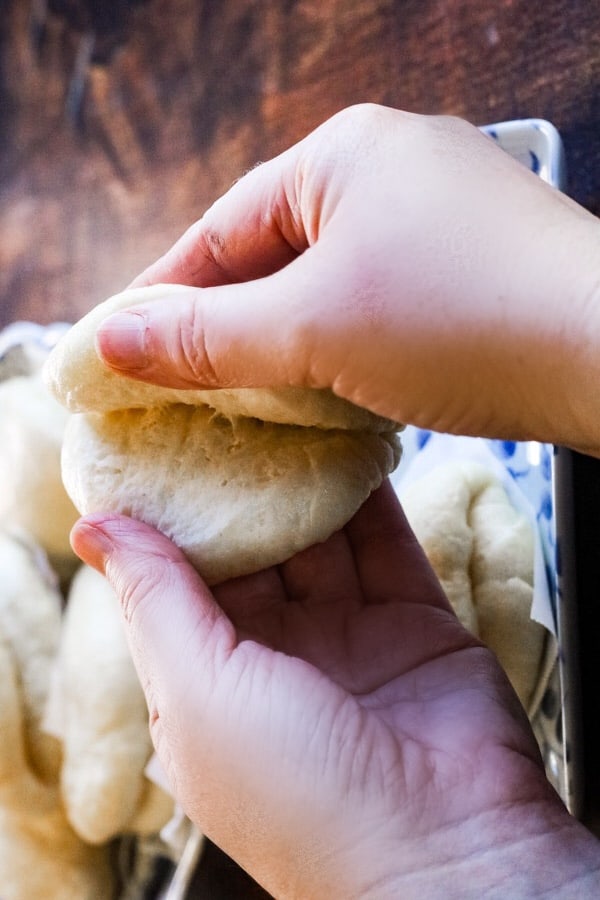
What to fill your buns with
You can fill your Chinese steamed buns with whatever savory fillings you like. Char Siu or Chinese roast pork is a popular filling, as is chicken in hoisin sauce. Or you could go vegetarian with sesame glazed tofu or black bean sauce mushrooms.
If you’re looking for a sweet filling, try coconut custard or sweet bean paste for dessert buns.
You can fill your buns with anything you like. I love to use Korean bulgogi (beef in gochujang sauce), vegetables in an Indian-style curry sauce, or crispy Japanese-style pork belly with pickled daikon radish.
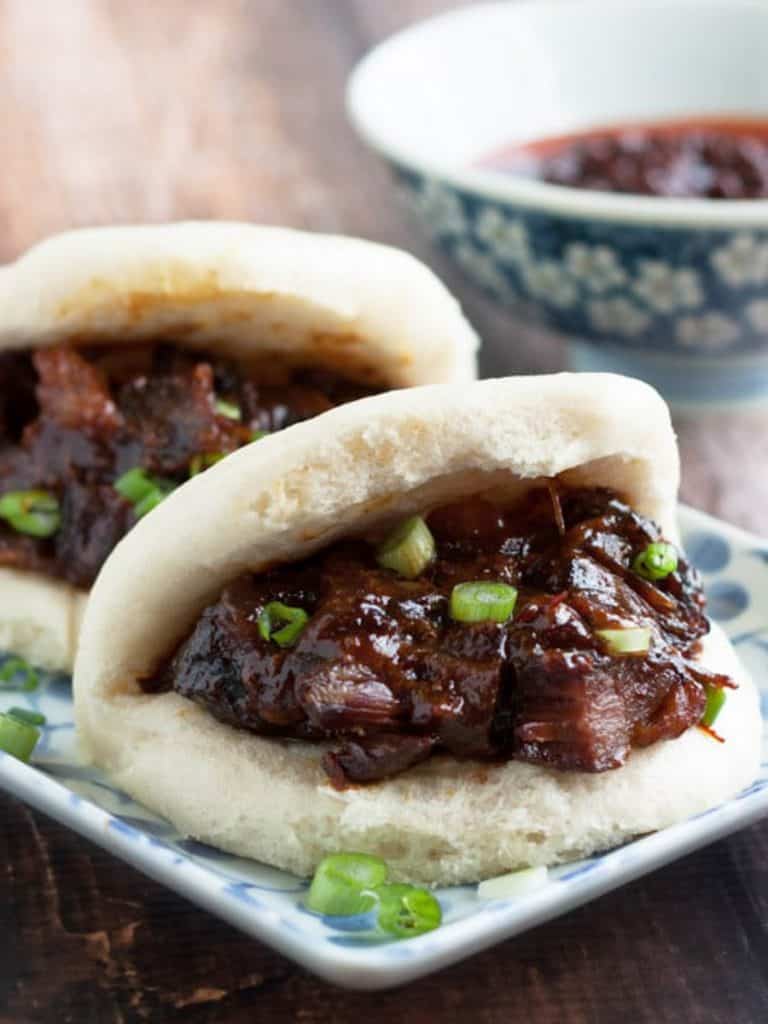
more chinese recipes you’ll love
- Mongolian Chicken
- Crispy Chilli Beef
- Char Siu
- Char Siu Bao
- Salt and Pepper Chicken
- Har Gow Chinese Shrimp Dumplings
- Singapore Noodles
- Sesame Noodles
- Pork Fried Rice
- Szechuan Shrimp
- Hoisin Spare Ribs
- Chinese Dry Fried Green Beans
- Vegetarian Dan Dan Noodles
- Sesame Chicken
- Kung Pao Chicken
- Fried Wontons
- Sweet and Sour Tofu
- Mantou Chinese Steamed Buns

Chinese Steamed Buns or Mantou
Ingredients
- 1 envelope 1 ½ teaspoons instant or active dry yeast
- ¾ cup warm tap water plus additional as needed
- 2 tablespoons plus a pinch sugar divided
- 2 tablespoons neutral flavored oil such as grapeseed sunflower seed, or safflower, plus more for oiling the bowl
- 2 ½ cups 12 ½ ounces all-purpose flour
- 2 teaspoons baking powder
- Pinch of salt
Instructions
- In a glass measuring cup with a spout, combine the ¾ cup warm water, yeast, and pinch of sugar. Stir to combine. Let sit for 10 minutes or
so, until the mixture is frothy. Stir in 2 tablespoons oil. - In a large mixing bowl or the bowl of a stand mixer, combine the flour, baking powder, salt, and the remaining 2 tablespoons of sugar.
- With the mixer running (or while stirring by hand), add the yeast mixture in a slow, steady stream, mixing until the dough comes together
in a ragged ball. The dough should hold together and be a bit sticky to the touch. If needed, add an additional 1 to 4 teaspoons of warm water while mixing. If using a stand mixer, knead for about 3 minutes. - Turn the dough out onto a board and knead by hand for an additional 3 to 6 minutes (longer if you didn’t knead it in the stand mixer) to
form a nice, smooth ball. - Oil a large bowl and place the dough in it, turning once to coat with oil. Cover with plastic wrap, pressing the wrap directly onto the dough. Set in a warm place, such as on your kitchen countertop, and let rise until doubled in size, 1 to 2 hours.
- Turn the dough out onto a lightly floured board and split it into to 2 roughly equal-sized pieces. Roll each piece into a log and, using a knife, cut each log into 8 roughly equal-sized pieces. Roll each piece into a ball and then, using a rolling pin, roll each into an oval about 3 inches wide
by 4 ½ inches long and ¼-inch thick. Fold each oval in half to make a semi-circle. Set each bun on a small square of parchment paper. - To cook the buns, place them in a steamer basket (Don’t crowd the basket as the buns will puff up as they cook and will stick together if they are too close. You may need to cook them in several batches. If you have stacking bamboo baskets, you can stack 3 baskets at a time.) Set the steamer over boiling water and cook for about 10 minutes.
- Serve hot, with fillings, and let diners fill their own buns.



1 thought on “Chinese Steamed Buns (Mantou)”